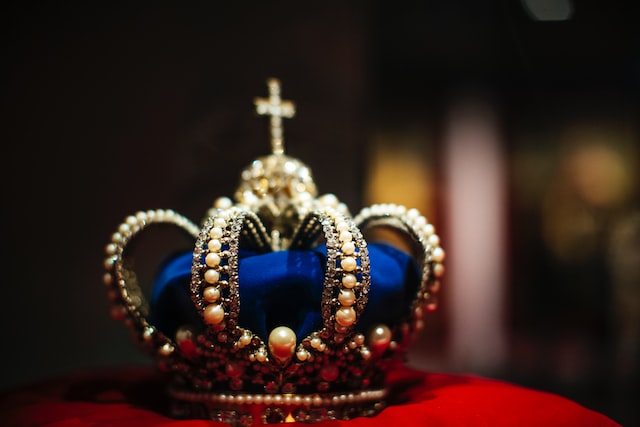Richard Turnbull: Her Majesty Queen Elizabeth II (1926–2022)

The longest reign of any British monarch came to an end on the afternoon of Thursday, September 8, 2022. Queen Elizabeth II died peacefully at Balmoral Castle, her favorite residence, in the northeast of Scotland. She occupied a unique place in the hearts of the British people and countless millions beyond the shores of the United Kingdom. We give thanks to God for her life and faith. May she rest in peace and rise in glory.
The implications of Her Majesty’s passing, for both the nation and the Church of England, are enormous. The Queen was a person of deep, personal, and genuine faith that expressed itself in numerous ways during the course of her reign. We will never see the like of her again. Her humility, not least in times of adversity, her cheerfulness as she carried out decades of public and charitable duties, and her absolute dedication to the service of the nation made her a focus of national unity and identity. We mourn her loss. She was deeply loved.
Quite simply it is impossible to overestimate the impact of Queen Elizabeth’s life and reign.
The future Queen was born in London on April 21, 1926. No one at that time could imagine that the Princess Elizabeth would go on to reign longer than any other British monarch, more than 70 years. Longer than the great Victoria (nearly 64 years), George III (just under 60 years), not to mention her namesake, Elizabeth I (a mere 44 years).
The British monarchy has never been devoid of complexity and trouble. When she was born, both her uncle and her father were in line for the throne before her, and any son born to her parents would also have taken precedence. It was never expected that she would succeed to the Crown. In 1936, upon the death of her grandfather, George V, her uncle Edward VIII was crowned king, only to abdicate to marry Wallis Simpson. The Church of England, of which Edward was titular head, would not allow the King to marry a divorced woman. And so Elizabeth’s father succeeded as George VI, and Elizabeth became heir presumptive.
The deep-rooted sense of service in Princess Elizabeth’s heart, her humility and sense of duty, was perhaps first broadcast more widely in her radio address on her 21st birthday in 1947.
I declare before you all that my whole life, whether it be long or short, shall be devoted to your service and the service of our great imperial family to which we all belong. But I shall not have strength to carry out this resolution alone unless you join with me, as I now invite you to do: I know that your support will be unfailingly given, God help me to make good my vow, and God bless all of you who are willing to share in it.
This really is a quite extraordinary statement of intent from someone so young. The themes of her future reign are clearly here for all to see: devotion, resolution, service, faith.
A few months later, on November 20, 1947, Elizabeth married Prince Philip of Greece and Denmark, later known as Philip Mountbatten, taking his mother’s name, and created Duke of Edinburgh on his marriage to the future Queen Elizabeth. They were married for 73 years, until his death on April 9, 2021. The image of Her Majesty alone at prayer in St. George’s Chapel, Windsor, at his funeral, dressed in black in the midst of the COVID-19 pandemic, became a defining image in the British political discourse of Boris Johnson’s premiership.
Elizabeth became Queen on February 6, 1952, at the age of 25, on the sudden death of her father. The King had been ill, treated for a malignant tumour. Elizabeth and Philip had set off on a tour to Australia, traveling via Kenya. The King was found dead in his bed in the early morning in his Norfolk residence at Sandringham, at the age of 56, after a coronary thrombosis. When he died, Elizabeth was asleep in the famous Treetops Hotel in Kenya. The news was conveyed to Prince Philip, who told Elizabeth when she awoke. They returned to London that same day, the Princess now Queen Elizabeth II, head of state and head of the commonwealth of nations. Without her consent, Parliament could not be summoned, no prime minister, other minister of the crown, judge, bishop, ambassador, or officer of the armed services appointed.
Six months before her coronation, Princess Elizabeth had stated:
Pray that God may give me wisdom and strength to carry out the solemn promises I shall be making, and that I may faithfully serve Him and you, all the days of my life.
The formal coronation took place on June 2, 1953. The Coronation Oath included the following faith commitment:
I will to the utmost of my power maintain the Laws of God and the true profession of the Gospel.
To that she remained faithful.
In 1955 the great evangelist Billy Graham visited London for one of his evangelistic crusades. Thousands were converted. The Queen met with the Southern Baptist preacher. The meeting was memorialized in the extraordinary, popular Netflix series The Crown, which proved an exceptionally engaging presentation of her life and reign. In actual fact, we do not know what the Queen and Billy Graham discussed; both had the maturity and discretion never to reveal the conversation. They almost certainly discussed forgiveness. Forty years later, on Easter Sunday 1995, Billy Graham preached in the Queen’s private chapel.
The Queen appointed 15 prime ministers—the last one, Liz Truss, just two days before her death. I list them to illustrate the mere passing terms of office of the political leaders compared to the constancy of Her Majesty; Winston Churchill (1951–55), Sir Anthony Eden (1955–57), Harold Macmillan (1957–63), Sir Alec Douglas-Home (1963–64), Harold Wilson (1964–70 and 1974–76), Edward Heath (1970–74), James Callaghan (1976–79), Margaret Thatcher (1979–90), John Major (1990–97), Tony Blair (1997–2007), Gordon Brown (2007–10), David Cameron (2010–16), Theresa May (2016–19), Boris Johnson (2019–22), and Liz Truss (2022–present). The longest of these was Margaret Thatcher, 11 years. The Queen reigned for 70.
Similarly, she met personally 12 U.S. presidents. Quite extraordinary.
Her own family presented many challenges. The failures of the marriages of three of her four children and the tragic death of Diana, Princess of Wales, caused her great pain and distress. Anne divorced in 1992, Charles and Andrew separated from their wives in that same year, which also saw a major fire at her beloved Windsor Castle. She described that year as her annus horribilis. Prince Andrew and Prince Harry have provided further challenges in more recent times.
Through it all, Elizabeth’s character was shaped by the Bible and her relationship with Jesus Christ, whose own life of sacrifice, service, and compassion formed the model and inspiration for her own. Throughout her life, the Queen consistently proclaimed the Christian gospel, which gave her strength, comfort, and peace. We saw this in so many ways, not least in her annual Christmas messages to the nation. Indeed, as time went on in the 2000s onward, she became ever more explicit in her faith. In 2002, she stated simply, “I draw strength from the message of hope in the Christian gospel.”
A fine example of her Christian witness is what she said in her 2011 broadcast:
God sent into the world a unique person—neither a philosopher nor a general, important though they are, but a Saviour, with the power to forgive.
And the following year:
This is the time of year when we remember that God sent his only Son “to serve, not to be served.” He restored love and service to the centre of our lives in the person of Jesus Christ.
You will read and hear numerous reflections on her reign. Her faith will be mentioned but not dwelt upon. I wanted to share with Acton readers the deeper expressions of her faith. I did not meet the Queen personally but saw her in the flesh on several occasions; at the services to open, and addresses to, the General Synod of the Church of England (on which I served for 10 years) and at the national Millennium Service in the year 2000. She was steadfast, dutiful, devoted, prayerful.
Shortly after the announcement of Her Majesty’s death, a rainbow, which promise of God’s faithfulness, appeared in the sky over Windsor Castle, the Queen’s main residence near London, followed by a double rainbow over Buckingham Palace. I am a sufficient believer in divine providence to assert this as a sign of God and an act of God.
What next? Many have dreaded this day. This is a moment of national sadness. This was a reign like no other. Many challenges lie ahead.
Charles III is now King. He will, in due course, take the Coronation Oaths. He will become Defender of the Faith. There was much discussion in earlier years that Charles wished to become Defender of Faith or even Faiths. Subtle distinctions go deep. The monarch is the Supreme Governor of the Church of England, a church that in its foundation documents makes clear is built on scripture and prayer. Charles’ faith is rather less explicit than that of the Queen. He is also divorced and remarried. The Church itself may wobble, no longer presided over by such a steadfast Christian as Queen Elizabeth, a Supreme Governor more faithful to Christ than any archbishop. We can only pray that Charles will come to know the Lord Jesus in the same way as did Her Majesty. There is also the politics. The Queen masterfully remained above the political fray; Charles has displayed a somewhat worrying tendency to meddle and, usually, in a progressive direction. Pray for restraint.
If there is one passage of Scripture that comes to mind upon reflecting on this momentous occasion, it is this:
I have fought the good fight, I have finished the race, I have kept the faith. Henceforth there is laid up for me the crown of righteousness, which the Lord, the righteous judge, will award to me on that day, and not only to me but also to all who have loved his appearing. (2 Tim. 4:7–8)
May I offer this prayer?
Gracious God, we give you thanks and praise for the life of your servant Queen Elizabeth, for her faith and her dedication to duty, to service and to nation. Bless us, our Father, as we mourn her death, and may her example continue to inspire us; through Jesus Christ our Lord. Amen.
God save the Queen. God save the King.
This article was first published for the Acton Institute.
 Dr Richard Turnbull is the Director of the Centre for Enterprise, Markets & Ethics (CEME). For more information about Richard please click here.
Dr Richard Turnbull is the Director of the Centre for Enterprise, Markets & Ethics (CEME). For more information about Richard please click here.
